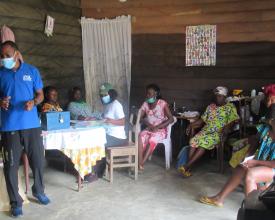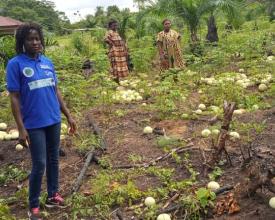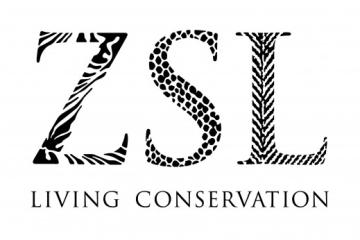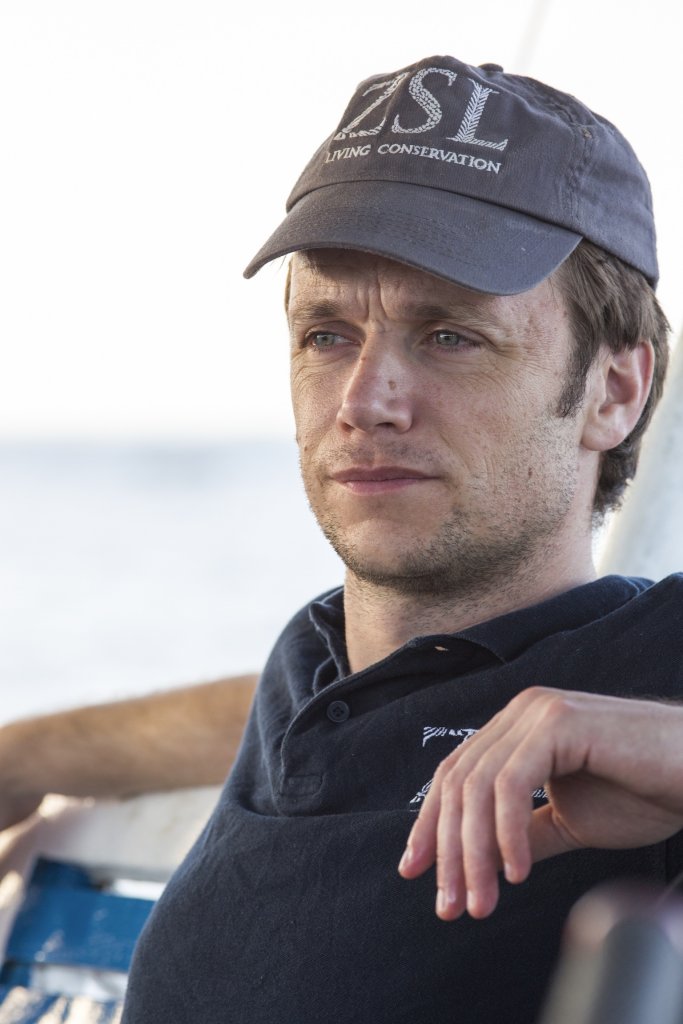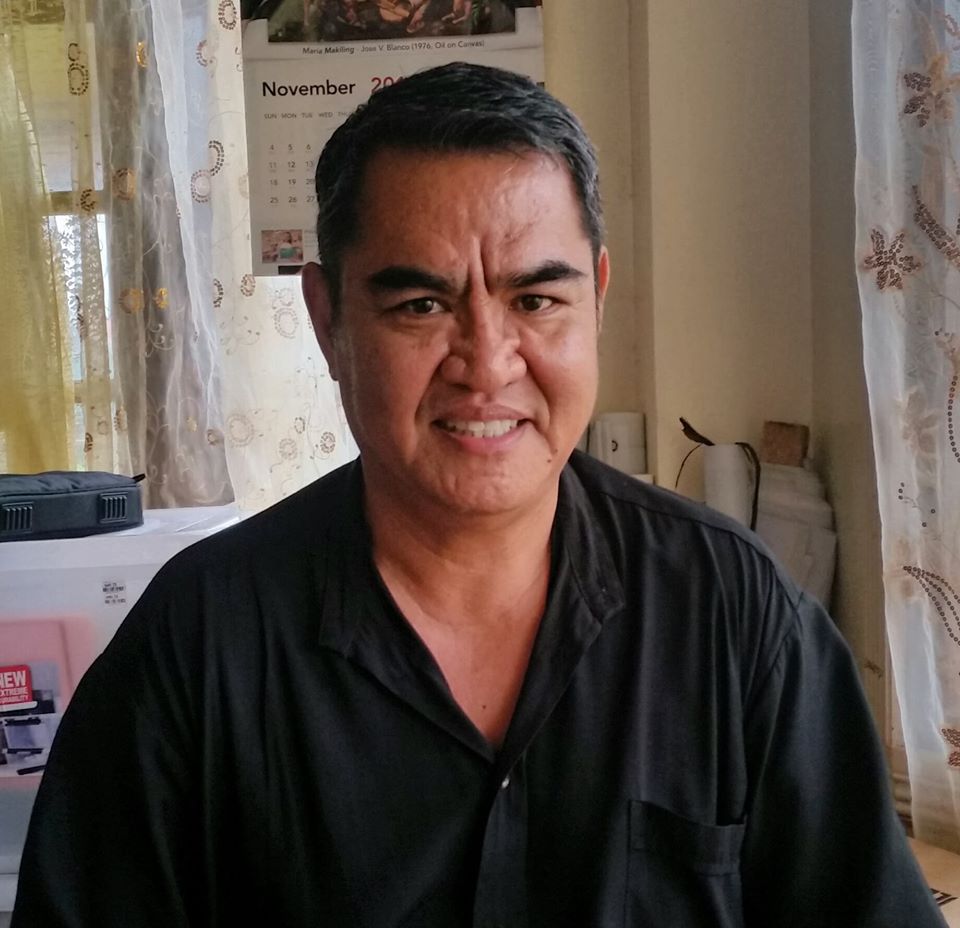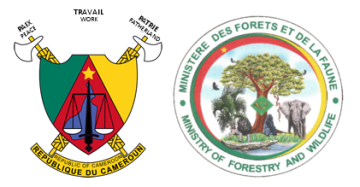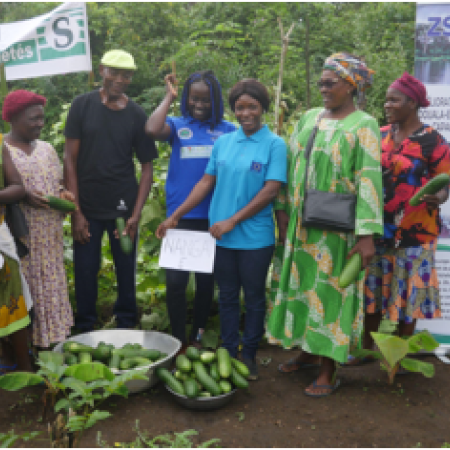
Promotion of income-generating activities (IGAs) through capacity building of local stakeholders in the Douala-Edéa conservation landscape (Douala-Edéa National Marine Park and Lac Ossa Wildlife Reserve)

Douala-Edéa is located in the coastal zone of Cameroon. It contains a unique combination of marine and terrestrial ecosystems, and is home to two important protected areas, the Réserve de Faune du Lac Ossa (RFLO) and the Parc National de Douala-Edéa (PNDE). These two protected areas have a combined surface area of 2,669 km2, with over 50,000 inhabitants who are 80% dependent on the resources of these protected areas. In order to reduce the pressure on natural resources, and to offset the dependence of local communities on these resources, the Zoological Society of London (ZSL) and the Cameroon Wildlife Conservation Society (CWCS) have been promoting income-generating activities (IGAs) in the landscape since September 2020, through the project " Improving the management of the Douala-Edéa National Park and Lake Ossa Wildlife Reserve by strengthening the capacities of local stakeholders ", financed by the European Union and the ACP group of states through the BIOPAMA PROGRAM.
Contexto
Défis à relever
The heavy dependence of local communities on the natural resources in these protected areas, the pressure of all the illegal activities they engage in, such as illegal fishing, poaching and overfishing, and the demographic growth linked to the internally displaced people from the Anglophone crisis, made it difficult to use the resources sustainably. It was therefore important to find alternative solutions to slow or halt this trend, hence the setting up of community banking groups, raising awareness of the sustainable use of these resources and the introduction of income-generating activities (IGAs).
Ubicación
Procesar
Summary of the process
For best results, the interdependence and coherence of the constituent blocks were necessary to optimize the promotion of income-generating activities in the Douala-Edéa conservation payasage. Block 1 shows the steps involved in setting up a Village Savings and Credit Association (VSCA), representing simple solutions and its generally effective operation. These associations play a key role in co-management, reducing the pressure on fish and forest resources.block 2 highlights the steps taken to present the various IGAs to the local communities, and the choice of cucumber cultivation itself, given its short production period. block 3 is the phase of setting up the IGA itself. Finally, block 4 presents the monitoring and evolution of the IGAs. These activities operate in cycles lasting nine to twelve months.
Building Blocks
Establishment/creation of Village Savings and Credit Associations
It consists in bringing together community members and creating mixed and free groups according to their social preferences. AVECs are created in villages whose populations more or less meet the following criteria: proximity to protected areas, potential impacts of community activities in protected areas, importance of the community in the circuit of movement of goods and people, their willingness to take part in the project. Once most of these conditions have been met, the team meets the community with the permission of the traditional authorities, and a community mobilization meeting is scheduled.
During the meeting, the project's objectives are presented to them, and they are given a period of reflection so that they can re-examine the project and decide whether or not to join. If they decide to join, the team accompanies them through the process of setting up the AVEC, which operates as follows:
- Weekly or monthly meetings at their convenience
- A statute and rules of procedure are drawn up
- A board of 5 to 7 members elected each year
- AVEC has 15 to 30 members
- Loans with interest are authorized
- Savings and profits are distributed to members in proportion to the shares saved.
Enabling factors
These include
- The approval of local authorities for this new community bank model
- The mobilization of traditional chieftaincies to bring community members together at consultation meetings.
- The availability of communities for this new type of community savings model
- The involvement of more women in exchange meetings
Lesson learned
- Leave it up to the communities to choose the members of their group.
- Always take into account the social context of intervention before setting up this kind of community bank mechanism, because in one of our intervention areas, whose communities are heterogeneous in terms of population, there was a strong presence of expatriates such as Nigerians, Malians, Ghanaians and Cameroonians. The creation of AVEC community banks has not been successful in this locality, due to the non-stability of the members of this population.
- The interest generated by the loans must be shared equitably to avoid conflicts between group members.
- The importance of living in a community to promote solidarity and mutual aid.
Identification of income-generating activities (IGAs)
Proposals and development of IGA projects take place after the AVEC has been in operation for one year, in order to ensure that the group is cohesive. Meetings are organized with the AVECs to list the IGA proposals they would like to undertake. It's important to emphasize that the approach used must be down-top (proposals are not imposed by the project), in order to reinforce the adhesion and appropriation of the project by the members. On the basis of their proposals, an analysis is made to identify the activities best suited to the local context.
Enabling factors
Financial planning is important and can help to improve the business, as it indicates whether or not profits can be made and requires improvement within the group. Two plans are imperative for business planning:
-The sales and costs plan (making a monthly forecast of sales and costs for the year).
-The cash flow plan (helps you to know in advance each month's cash inflows and outflows, and provides assurance of its availability).
Lesson learned
- Orienting the choice of AGRs with short production runs
- IGAs must have a low investment rate
- Let communities choose IGAs according to their social context
- The opinion of all those involved must be taken into account to avoid any future inconvenience in the event of failures during the implementation phase.
Setting up income-generating activities proper
- Training and supply of inputs:
Training is provided by professional consultants in the field (SEMAGRI), and consists of building members' capacities in agropastoral techniques according to the chosen activity. AVEC then used their own funds to purchase the inputs they needed to develop their activities.
-The development of school/experimental fields: these are test areas where the training received is put into practice. Depending on the activity, there were school fields for agriculture and school farms for livestock. These areas are managed by the community and the profits are paid back to the group. These fields also enable members to identify the activities they would like to pursue.
Enabling factors
Involvement of all beneficiaries (members of the IGA group) in the fieldwork phase.
Lesson learned
Contribute to the development of alternatives linked to fishing and hunting activities in the Douala-Edéa landscape.
Stimulate the green entrepreneurial spirit in each learner.
Monitoring and empowerment of IGAs
This corresponds to the individualization phase of the IGAs. Each member, having identified the activity that corresponds to him or her, breaks away from the group and sets up on his or her own. Close monitoring and evaluation of the IGAs developed by these communities is carried out with the aim of refining members' knowledge of their respective activities and minimizing production losses.
Enabling factors
Overall, it enabled us to identify any shortcomings that had not been observed during the implementation phase:
- Communication on the progress of activities
- Proximity to markets and major towns, to enable crops to be sold off
- Optimization of cucumber yields
Lesson learned
Among other things, the general objectives were to
- Allowing communities to choose with whom they would like to work in pairs.
- The transfer of experience from other members of neighboring villages on how to monitor an IGA.
Impacts
Overall, the solution has :
- Allowed the creation of 04 Village Savings and Credit Associations (community banks) whose cumulative savings amount to 4,865,550 Fcfa, with a representation of 75 women and 30 men. In each of them, a special "environment" fund was set up for the implementation of IGAs and the legalization of these AVECs, enabling them to benefit from small subsidies from the State and other financial project structures.
- Improving the living conditions of local communities by marketing the products of these IGAs.
- Diversification of IGAs: snail farming, market gardening (cucumbers), watermelon, cassava and banana plantain.
- Solving insecurity problems: the search for seasonal non-timber forest products (NTFPs) is not always without consequences, as in 2015 in the Douala-Edéa National Park we recorded the disappearance of 09 teenagers who went to collect snails after rainy days. The main aim of setting up the snail farming activity (héliciculture) was to mitigate this type of incident.
- sharing experience between communities, especially in snail farming
Beneficiaries
The beneficiaries of the BIOPAMA project are the local population, grouped into Village Savings and Credit Associations.
Sustainable Development Goals
Story

The women of the Mouanko locality did not have the spirit of savings following the community bank model. Through the ZSL approach, they mobilized and grouped together to form the Association Villageoise d'Epargne et de Crédit Femmes Entreprenantes de Yadibo (FEYADI), made up entirely of women (22). At first, they were very skeptical about having their money kept anywhere but at home, so they decided to save the smallest amount set by the association. The more time passed, the more they got involved. Some time later, they introduced the caisse environnement to become self-sufficient. Once the funds were in place, they were able to take advantage of their first training sessions on cucumber and watermelon cultivation in Mouanko. These crops were chosen by them because they are short-lived (3 months). At first, it seemed like a myth, as they knew it was an endemic crop in the southern Cameroon region. Three months later, all happy, they had their first, second and third harvest in the same field. Since then, the majority of FEYADI members have been working individually on their IGAs.
